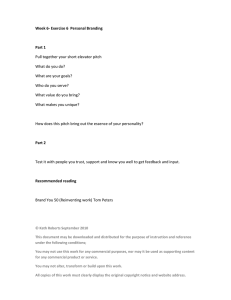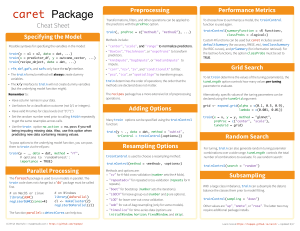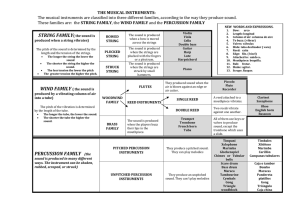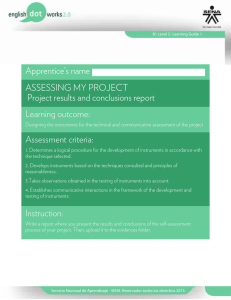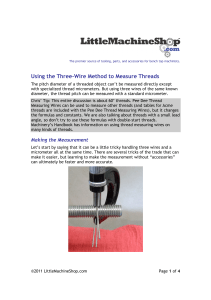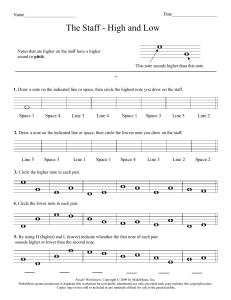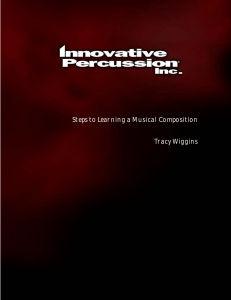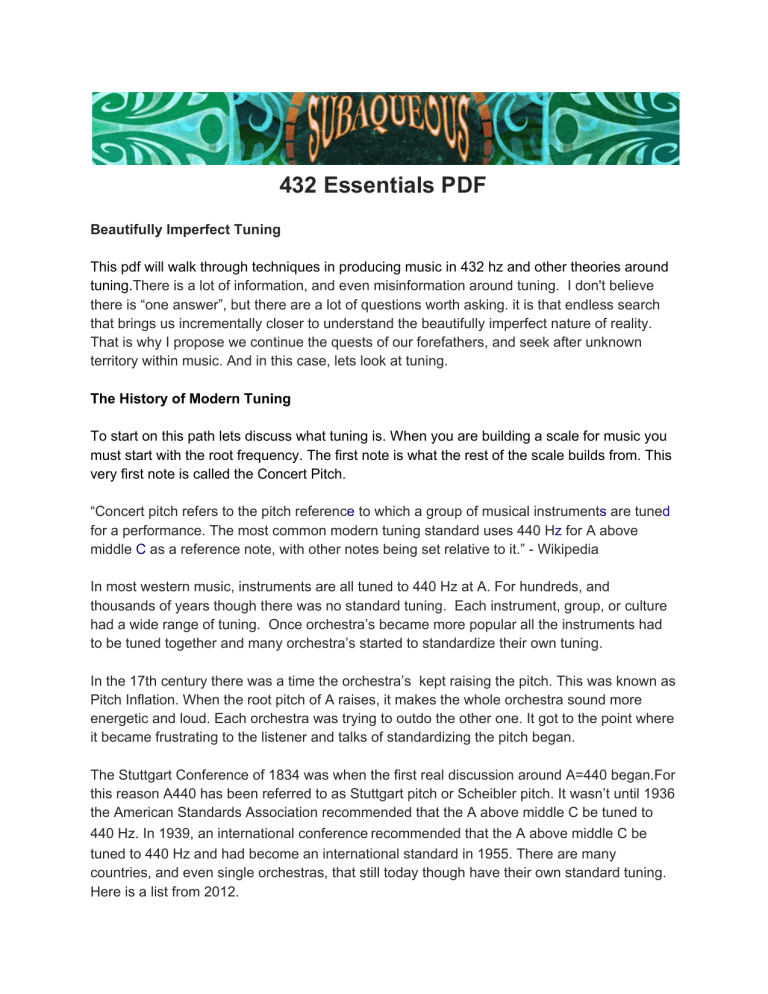
432 Essentials PDF Beautifully Imperfect Tuning This pdf will walk through techniques in producing music in 432 hz and other theories around tuning.There is a lot of information, and even misinformation around tuning. I don't believe there is “one answer”, but there are a lot of questions worth asking. it is that endless search that brings us incrementally closer to understand the beautifully imperfect nature of reality. That is why I propose we continue the quests of our forefathers, and seek after unknown territory within music. And in this case, lets look at tuning. The History of Modern Tuning To start on this path lets discuss what tuning is. When you are building a scale for music you must start with the root frequency. The first note is what the rest of the scale builds from. This very first note is called the Concert Pitch. “Concert pitch refers to the pitch reference to which a group of musical instruments are tuned for a performance. The most common modern tuning standard uses 440 Hz for A above middle C as a reference note, with other notes being set relative to it.” ­ Wikipedia In most western music, instruments are all tuned to 440 Hz at A. For hundreds, and thousands of years though there was no standard tuning. Each instrument, group, or culture had a wide range of tuning. Once orchestra’s became more popular all the instruments had to be tuned together and many orchestra’s started to standardize their own tuning. In the 17th century there was a time the orchestra’s kept raising the pitch. This was known as Pitch Inflation. When the root pitch of A raises, it makes the whole orchestra sound more energetic and loud. Each orchestra was trying to outdo the other one. It got to the point where it became frustrating to the listener and talks of standardizing the pitch began. The Stuttgart Conference of 1834 was when the first real discussion around A=440 began.For this reason A440 has been referred to as Stuttgart pitch or Scheibler pitch. It wasn’t until 1936 the American Standards Association recommended that the A above middle C be tuned to 440 Hz. In 1939, an international conference recommended that the A above middle C be tuned to 440 Hz and had become an international standard in 1955. There are many countries, and even single orchestras, that still today though have their own standard tuning. Here is a list from 2012. The San Francisco Symphony tunes or 442 Hz The Berlin Philharmonic tunes to 445 Hz The Boston Symphony Orchestra uses A = 442 Hz. In the grand scheme of things, standardizing the pitch is a very new idea. Now many DAW’s, Digital Audio Workstations, like Ableton Live will automatically set your global pitch to A=440. TUNING AND HOW IT DIFFERS FROM TEMPERAMENT There is a difference between that pitch reference, that concert tuning, and temperament or scale you build from that pitch reference. When we are talking about tuning there are 2 things we need to keep in mind and understand how they are separate, but interrelated. I just explained what the pitch reference of modern music is A=440hz. All this means is that the first note, that all others are built from. There are many different ways to calculate what the frequency of the next note is. This is when you get into tuning schemes, and temperament. There has been endless books and theories on Temperament and the basic mathematical structures of tuning. We will not go deep into this subject. If you are interested I highly suggest this blog http://www.roelhollander.eu/ It has a lot of information on tuning and the theories behind it. I also highly suggest this series of videos by John Crooks: https://www.youtube.com/watch?v=0j­YXgXTpoA&list=PLC327D5001DD70760 To overview lets just stick with music that fits a perfect circular system, like western music, and look at Equal Temperament, Just Intonation, and Scale of Fifths. What is Temperament: “In musical tuning, a temperament is a system of tuning which slightly compromises the pure intervals of just intonation in order to meet other requirements of the system. Most instruments in modern Western music are tuned in the equal temperament system. Temperament is especially important for keyboard instruments, which typically allow a player to play only the pitches assigned to the various keys, and lack any way to alter the pitch of a note in performance. Historically, the use of just intonation,pythagorean tuning and meantone temperament meant that such instruments could sound "in tune" in one key, or some keys, but would then have more dissonance in other keys.” We won’t go too deep into this, but this all boils down to one simple fact. The world is not a perfect place. As amazing as humans are with mathematics, perception, and bending them for expression, music has the innate flaw of an imperfect system. So to try and make up for it in western musical traditions we made a compromise. That is where Equal Temperament came in. We detuned all the notes that make up our twelve notes per octave. This means everything is slightly out of harmony, but the trade off is we can move from key to key and it sounds relatively good. To bring it all back together lets look at A=432. When you pitch down A from 440 to 432 in any DAW, and almost every western instrument, you are still using the Equal Temperament the only thing that changed was the starting frequency, but the ratio between notes is still the same. If you want to look more into alternative tuning schemes check out the links I just shared above. Why 432 Lets start with the very basic concept of the difference in A=440, 430, or 450. The lower the pitch the smoother the sound and the higher the pitch the more energetic it begins to sound. The higher the pitch the more hyped and loud the music can sound. Because of this many people feel 440 is a little too agitated of a basic pitch to start from, and if we lower it then music will have a smoother and more calming quality. There is also some interesting correlations of 432 and the natural division of timing, math, and other qualities of the universe. Fulcanelli, the mysterious french master alchemist who wrote ‘Le Mystère des Cathédrales’ has said “…Saturn, because it is at the greatest distance from the sun of all the visible planets, has the longest “year,” taking a little less than 30 years to complete one circuit of the zodiac. This makes it the best precessional timekeeper of all the planets. Saturn completes one precessional Great Year of 25,920 years every 864 of its “years,” a half cycle every 432 of its “years,” a quarter cycle every 216 of its “years,” and an eighth of a cycle every 108 of its “years.” This equals (108 x 30) 3240 years, or 45 degrees of precessional arc. We can continue counting in Saturn years down to 9, one 96th of the precessional year, or 3.75 degrees of arc and 270 earth years, which brings us to the alignment period of the galactic meridian and the zenith/nadir axis. If we note when Saturn fell on a significant marker, such as the galactic center or antipode, then we can simply count Saturn cycles to mark the span of the Great Precessional Year. In this way, we could determine that if Saturn fell on the galactic antipode and made a station (since the earth is moving faster than Saturn, it appears as if it is overtaken, making it appear to stand still in the sky to mark the moment), then 432 Saturn cycles ago it was making a station at the same location, and would be doing so again at the completion of 864 Saturn cycles.” ­Fulcanelli You can see repeated patterns in the association with 432. For more information on this check out this youtube video. It shows some very interesting mathematical infromation: https://www.youtube.com/watch?v=FY74AFQl2qQ Our Quest In Tuning: There is a current trend in Electronic music and the programs used to make music through a computer. The trend is to set the global tuning to 440 with no options to change it. Some DAW’s, like Logic, give you a way to change that for their native plugins but many do not. I believe we lose something as a culture when we unconsciously change the course of our future. I fear that music producers might just take 440 for granted and stick with it, without ever looking at the theory or even questioning. It is after all the quest that will teach us more about ourselves, our music, our feelings, our planet, and our culture. Because of that, I invite anyone reading this to experiment with retuning there music production. At the very least for the experimentation of it all. Another reason to experiment with tuning is to widen your pallet. By pigeon holing ourselves to the tight box of 440 equal temperament we are limiting the array of possibilities. Popular music the last few decays has been working within only one color palette. There is so many boundaries we can push, and worlds to discover. Tuning into 432 with Live To play music in 432 you must retune all your synths and presets. This might seem overwhelming idea at first, but it actually takes very little time at the beginning of your tracks. Once you get a library of instruments tuned, then it will also be that much easier. The simplest way to tune to 432hz is to just detune each of your instruments. By detuning you lower the first note, from 440­432 for example. since A=432 Live will then base every note from that point forward. You can not just lower the pitch at the end, because that will not retune it, it will just lower the overall pitch. This image shows the different tuning you could use for notes found in the Equal Temperament. As you can see when you move from 440 to 432 you are lowering the pitch by ­8hz. You can also see that just 2 notes down 440hz Equal Temperament is 494. If you ­8hz to that we do not get 484.90. The reason why is equal temperament is a ratio that moved up from the root of A. A ratio of “2 11/12” from 440 is very different than a ration of “2 11/12” at 432. Because of this you can not return the finished song. You must tune the instruments correctly to start with. If we detune a synth or sample though in Live by ­32cents then we are in fact detuning the root note to 432 and it will take the ratio from there to form the rest of the scales / octaves. Now lets look at a list of synths / samplers that can be retuned to 432. List of Ableton Devices: Collision: For collision look under the Resonator Parameter. Here change the Fine Tune to ­32ct Analog: For analog change the Detune Setting to ­0.32 for the Oscillator. If you are using 2 Oscillator’s remember to change both of them. Electric: For Electric look in the Global Section. Here change the Detune to ­0.32 Sampler: For sampler look for the Detune Parameter. Change this to ­32ct Simpler: For sampler look for the Detune Parameter. Change this to ­32ct Tension: For Tension look in the Keyboard Section. Here change the Detune Parameter to ­0.32 Operator:Operator is a little different from the others. The fine knob for the oscillators only raises the pitch, but does not go into the negatives. To lower the pitch you must lower the Course Knob first and then raise the Fine Tune Parameter to bring it back up just below the original octave. That is a list of all the Instruments in Ableton Live. If you are using Drum Racks you will have a bunch of Samplers or Simplers in a Drum Rack. Just change the Detune on each of those instruments. One tip that can save you a lot of time is Copy to Siblings. To do this you should first edit the Detune to ­32. Then Right Click, or 2 finger click, the Detune Parameter, or any parameter will work but in this case the Detune. Now you will see an option Copy Value to Siblings (#). This means it will copy whatever this value is to all other instruments within the rack. Third Party Plug­ins: If you are like me then you might have a host of Third Party Plugins you like to use in your production. Here is a list of Plugins you can use and the where to find the parameter to detune the instrument. This is in no particular order. Fabfilter Twin: Change the Osc Detune to ­0.320. Remember to do this for all the Osc. you are using. Massive: Go to the Global tab. Here change the global tuning to ­0.32 Kontakt: You can change the global tuning by going to the Master Page. Here change the Master Tune knob to 432. This will change all instruments loaded in kontakt to 432. Cyclop: This synth is a little trickier. There is a detune knob but it does not let you type in a value and it is very difficult to get right. So in live if you open up the Config Menu you can then move any knob to show it / map it. Once you do that, you can just type in ­32 in the detune. Razor in Reaktor: Change the Osc Detune to ­0.320 in the Voicing section. Sylenth: Change the Osc Detune to ­0.320. Remember to do this for all the Osc you are using. Zebra: Change the Osc Detune to ­0.320. Remember to do this for all the Osc you are using. Worlds to Inspire: Now that we have looked at how to tune in Ableton Live and third Party plugins we have opened the world of possibilities. I have created a huge collection of pre made instruments in 432 as well as templates to help you in your musical path. Visit www.subaqueousmusic.com to check out the packs I have to offer. I also invite you as a musician to dive deep. Learn all that you can, and continue to push the boundaries. There is a second Document I have created that looks at the Scale of Fifth tuning. If it is not included where you got this document, then check out www.subaqueousmusic.com. If there is continual interest in microtonal music I will continue to release my research, articles, and Live Packs. Feel free to contact me on the site, or order some packs to help fund future development.
